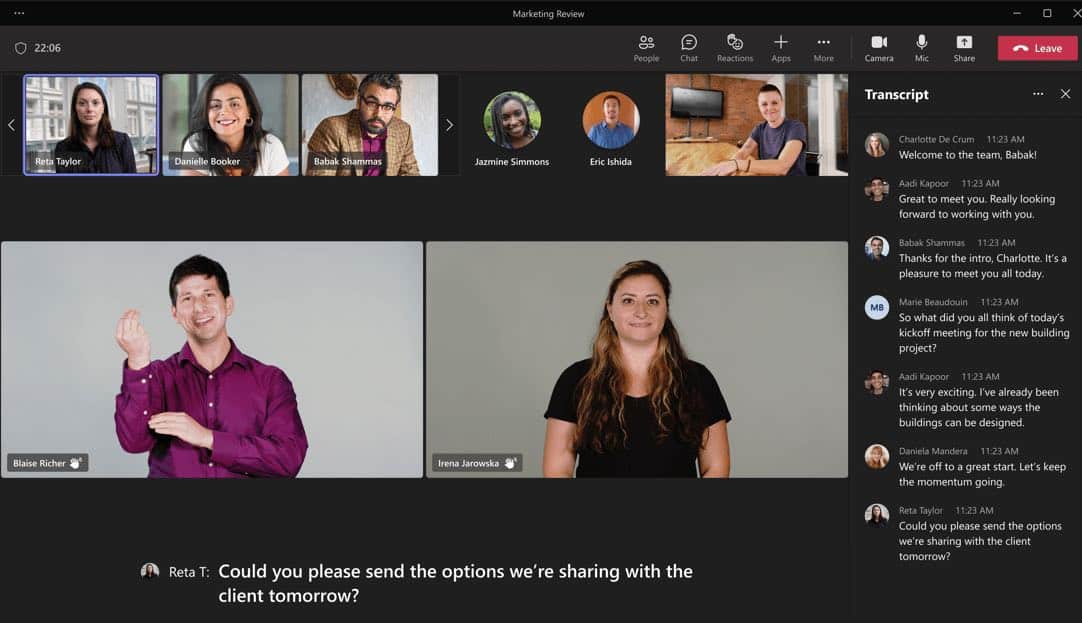
Above: Sign Language view in Teams. Screenshot courtesy Microsoft.
Microsoft has introduced Sign language view, a new meeting experience in Microsoft Teams that helps signers – people who are deaf/hard of hearing (D/HH), interpreters, and others who use sign language – keep one another prioritized on center stage, in a consistent location, throughout every meeting.
“As a Deaf person who uses Teams for several meetings a day, I am all too familiar with the challenges that virtual meetings pose to deaf and hard of hearing (D/HH) users. I face them too. As Accessibility Architect for Microsoft Teams Calling, Meeting and Devices, one of my primary responsibilities has been to build out the vision for creating a best-in-class experience for the D/HH community in Teams,” pointed Chris Sano, Accessibility Architect, Microsoft Teams.
Aiming to learn, Microsoft has talked with many D/HH users, listened to their feedback, and built out a roadmap for creators and users. Sign language view is a first step toward addressing several asks from the D/HH community, including:
- Keeping interpreters and other signers’ video feeds in a consistent location
- Ensuring that video feeds are an appropriate shape and size for sign language to be visible
- Empowering participants to have up to two other signers in view throughout each meeting
- Reducing repetitive meeting setup tasks like pinning interpreters and turning on captions at the start of each meeting
When sign language view is enabled, the prioritized video streams automatically appear at the right aspect ratio and at the highest available quality. Like pinning and captioning, sign language view is personal and will not impact what others see in the meeting. And it adapts to whatever user’s needs: they can enable sign language view on the fly in a meeting or as a setting that persists across all calls.
With sign language view turned on, the video feeds of the individuals that each user has designated stay visible on center stage as long as their video is on. Other participants can also be pinned or spotlighted without encroaching on the sign language interpreter.
Also, when someone shares content in the meeting, the prioritized signer video shifts positions at a larger size than the video feeds of other participants. Sign language view can be turned on by default across all meetings and pre-identify a set of preferred signers that work with inside users’ organization on a regular basis.
Sign language view and the accessibility settings pane are currently available in Public Preview. They will be rolling out to the general audience for the Teams desktop and web clients for commercial, and GCC customers in the coming weeks. For detailed instructions on how to enable, please refer to Public preview in Microsoft Teams on Microsoft Learn.
These features are just the beginning – one step along a much longer road. Microsoft is committed to create a Teams meeting experience that is not just accessible, but delightful, for deaf and hard of hearing participants. Users can provide feedback via the Help menu within Teams itself.

